Key takeaways
- Photography styles reflect the emotions and intentions of the photographer, serving as a visual signature of their personal perspective.
- Analyzing elements like light, composition, and color choice can enhance understanding of a photographer’s artistic decisions and storytelling capabilities.
- Practical application of style analysis involves experimentation and adapting various techniques to develop a unique photographic voice.
- Reflecting on influences and experiences is essential for creating an authentic photography style that expresses personal vision.
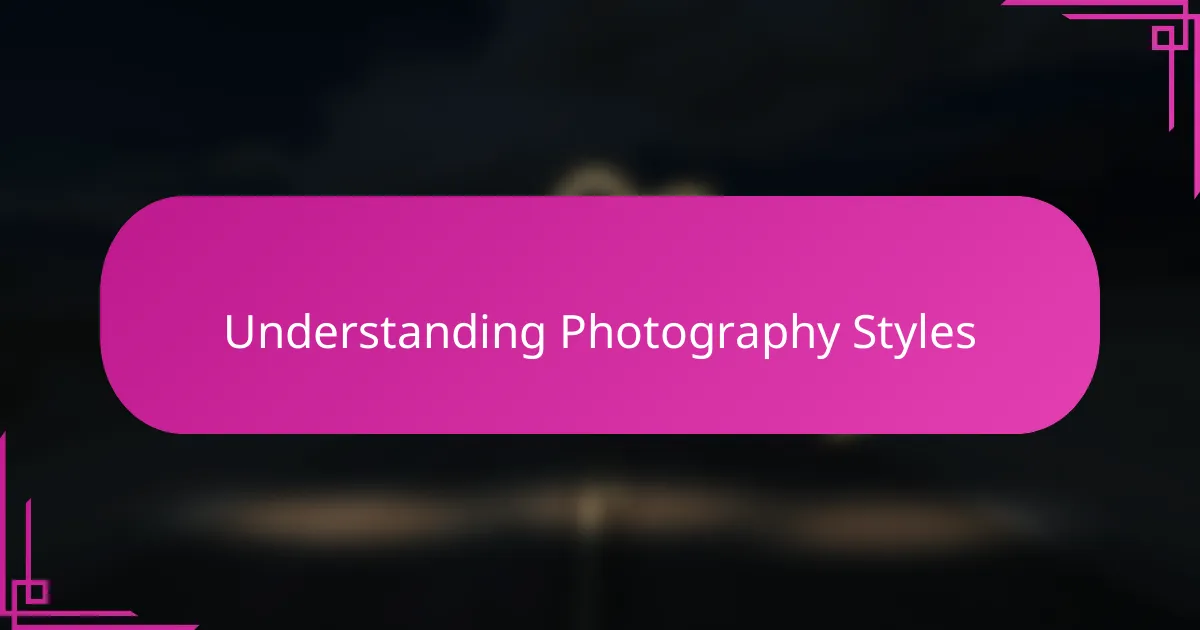
Understanding Photography Styles
Understanding photography styles goes beyond just recognizing visual trends; it’s about grasping the emotions and intentions behind the images. When I first studied the works of famous photographers, I realized that each style reflects a unique way of seeing the world, almost like a visual signature that reveals their personal stories and perspectives.
Have you ever looked at a photograph and felt an immediate emotional response without knowing why? That feeling usually comes from the photographer’s choice of style—whether it’s the stark contrast in black-and-white images or the soft, natural light in portraiture. These stylistic decisions are deliberate, shaping how we interpret the subject and connect with the moment captured.
For me, breaking down a photographer’s style means asking questions like: What mood are they trying to evoke? How do their compositions direct my eye? These reflections turn the act of viewing into a deeper dialogue, helping me appreciate not just the photo, but the artist’s voice behind it.
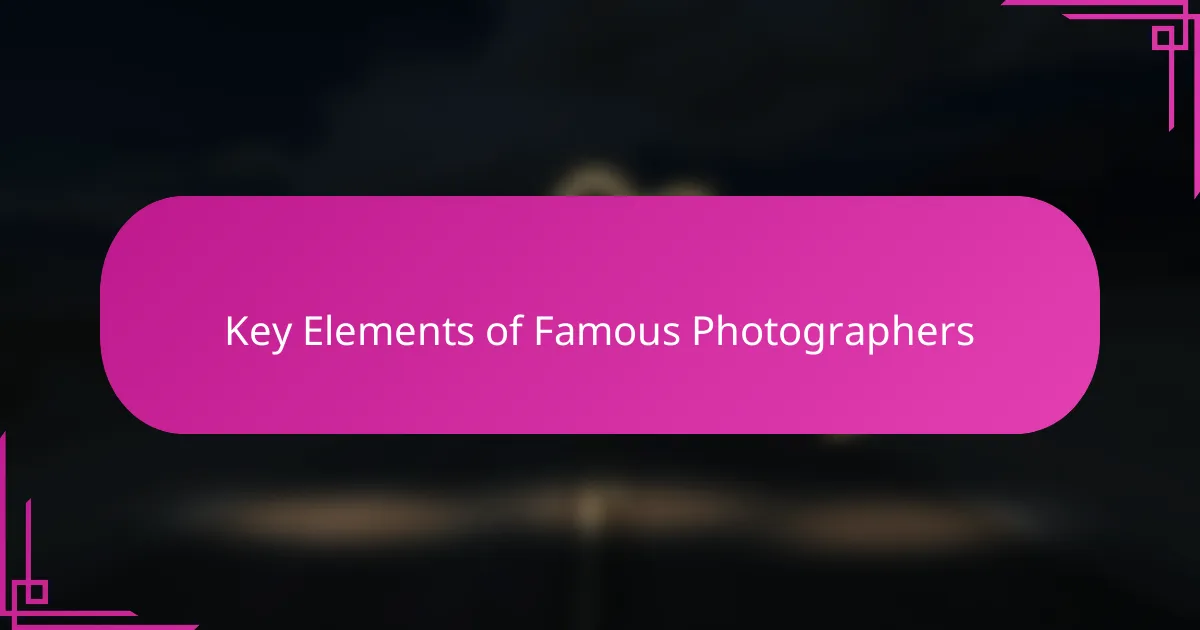
Key Elements of Famous Photographers
What stands out most to me when analyzing famous photographers is how they master light and shadow to tell a story. It’s almost like they paint with brightness and darkness, guiding my focus and emotions in a way that feels both intentional and instinctive. Have you noticed how some images linger in your mind because of their dramatic contrasts or delicate highlights?
Another key element is composition—the way photographers arrange elements within the frame. I recall studying a portrait where the subject was off-center, yet perfectly balanced by negative space. It made me realize that famous photographers don’t just capture moments; they carefully craft each one to lead the viewer’s eye exactly where they want. That sense of control, combined with freedom, is what makes their style so compelling.
Then there’s the choice of subject matter and what it reveals about the photographer’s worldview. Some focus on raw human emotions, while others explore abstract forms or landscapes. I often find myself asking, what drives these choices? For me, this curiosity deepens my connection to their work, turning each photo into a conversation rather than just an image.
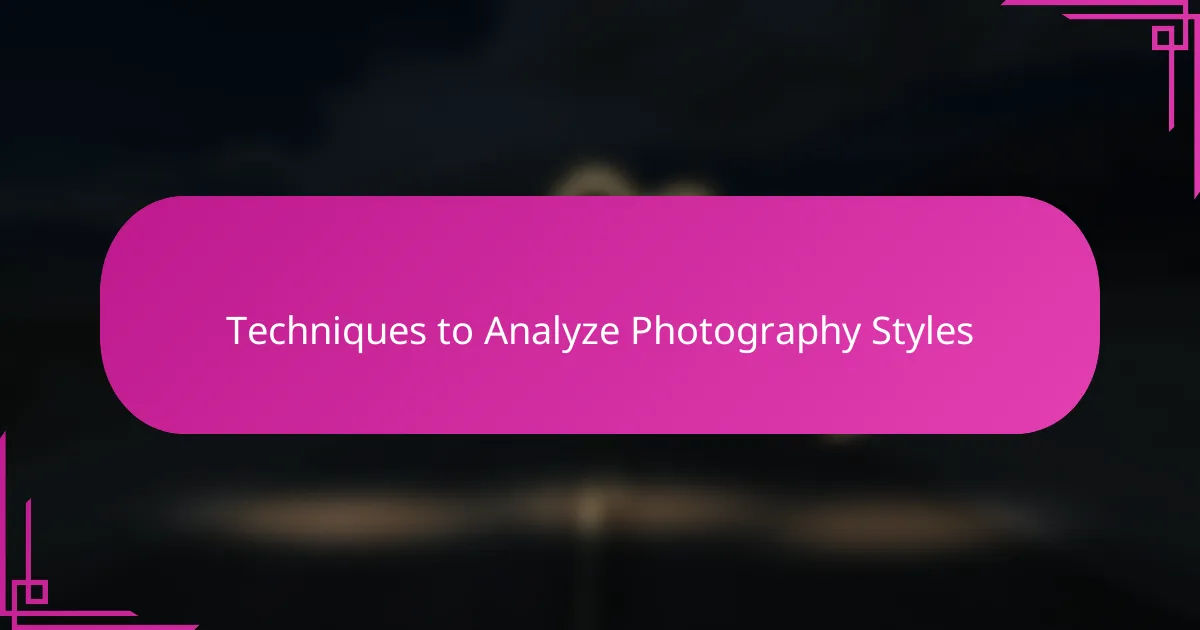
Techniques to Analyze Photography Styles
One of the first techniques I use to analyze photography styles is dissecting the use of color—or sometimes the deliberate absence of it. I remember poring over a series of monochrome street photos where the absence of color amplified the rawness and grit, making me wonder how much mood shifts with just this single choice. Have you ever noticed how color, or its lack, can instantly set a photograph’s emotional tone without a single word spoken?
Another method I rely on is studying framing and perspective. When I first encountered a bird’s-eye view shot from a renowned photographer, it challenged everything I thought I knew about subject emphasis. That moment taught me that changing the angle isn’t just a technical decision—it shapes the narrative the photo tells. I often ask myself: why did they choose this vantage point, and what does it say about their way of seeing?
I also find it incredibly insightful to analyze repetition and patterns within the frame. One time, while analyzing a famous photographer’s work, I noticed recurring geometric shapes subtly guiding my gaze throughout the series. It was like uncovering a secret code embedded within their style. Through this, I realized that patterns aren’t just aesthetic choices—they’re storytelling tools that keep viewers engaged on a deeper level.
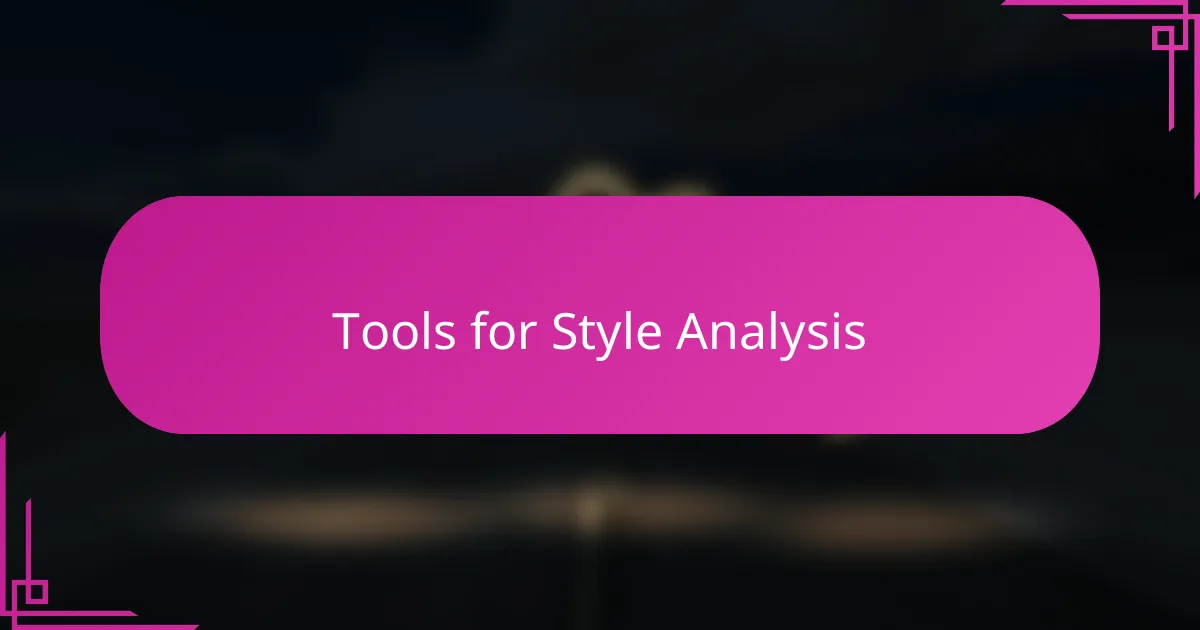
Tools for Style Analysis
When I dive into analyzing a photographer’s style, I often turn to digital tools like Lightroom and Photoshop to examine their editing choices up close. These programs let me isolate elements like contrast, saturation, and sharpness, revealing subtle decisions that shape the overall mood. Have you ever surprised yourself by noticing a tiny texture or tone shift that changes everything about how you feel toward an image?
Beyond software, I rely heavily on physical prints to connect with the artist’s style in a tactile way. There’s something about holding a printed photograph that invites a slower, more intimate inspection—details that screens sometimes flatten come alive. This hands-on approach helps me sense the photographer’s intent, almost like hearing their voice through the grain and paper.
I also find inspiration in comparing multiple works side by side, whether on a wall or a digital collage. Seeing patterns emerge across a series reveals consistent stylistic fingerprints—be it recurring compositions, lighting styles, or thematic elements. This method turns style analysis into a kind of visual detective work, where each clue deepens my understanding of the photographer’s creative mindset.
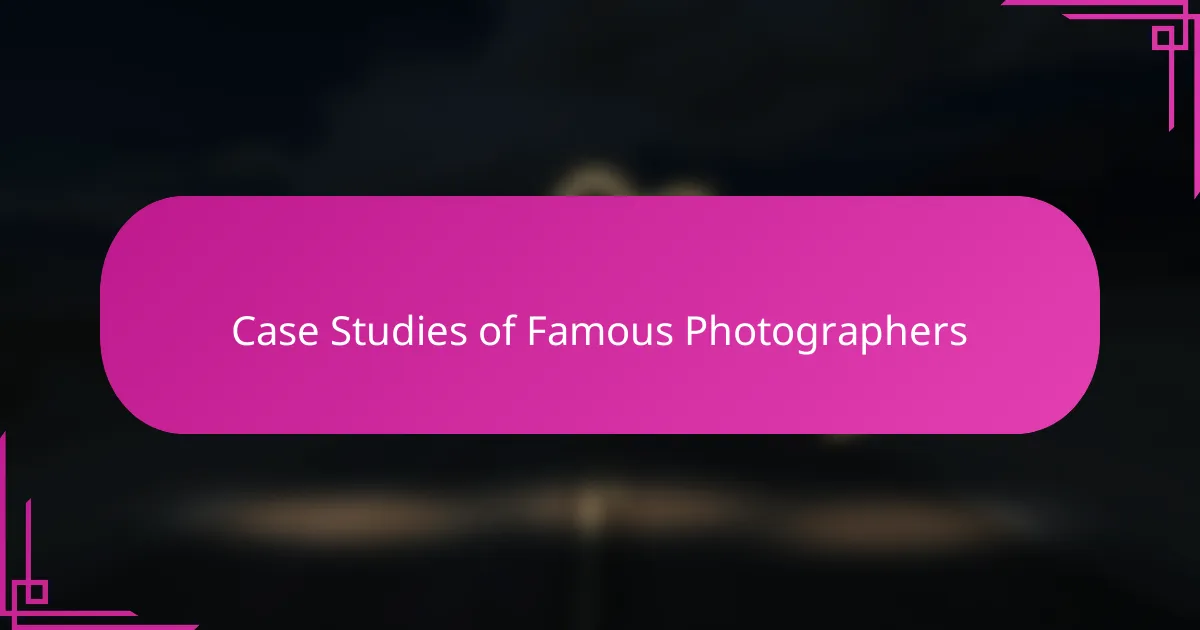
Case Studies of Famous Photographers
Studying the work of Henri Cartier-Bresson was a turning point for me. His concept of the “decisive moment” taught me to look beyond just technical skill and focus on timing and intuition. Have you ever noticed how a single click can capture an entire story, perfectly frozen? That’s the kind of mastery I strive to understand when I analyze his style.
Then there’s Annie Leibovitz, whose portraits always feel so intimate and theatrical at the same time. When I first saw her work, I asked myself: how does she make celebrities seem both larger-than-life and deeply human? Her use of dramatic lighting and carefully constructed sets showed me how a photographer’s style can blend storytelling with personality, creating images that linger in your mind.
Looking at Stephen Shore’s color work shifted my perspective on everyday scenes. His seemingly simple snapshots of mundane subjects made me realize that style isn’t about complexity—it’s about the vision behind capturing ordinary moments with extraordinary clarity. What I learned from Shore is that style can be subtle yet profoundly expressive, inviting viewers to see the familiar in a fresh way.
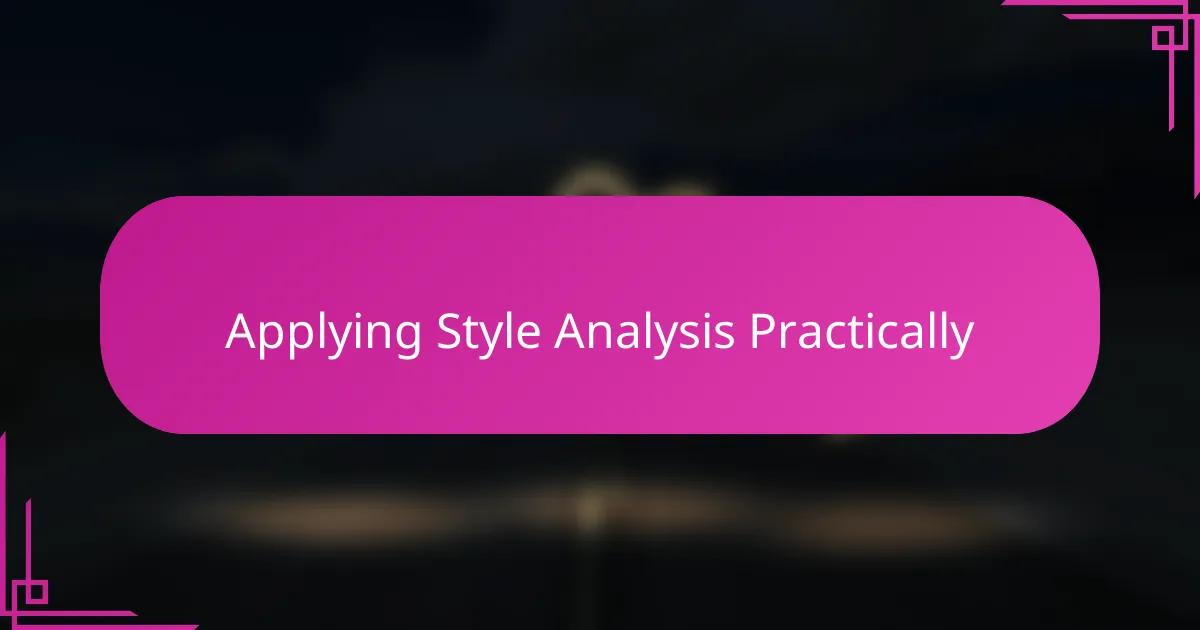
Applying Style Analysis Practically
Applying style analysis in my own work often starts with trying to replicate a single element that resonated with me—like a lighting technique or a compositional choice. I remember once attempting to mimic a photographer’s use of harsh shadows, and although it felt awkward at first, that experiment opened my eyes to the emotional weight those contrasts carry. Have you ever tried to put yourself in another artist’s shoes to really understand their decisions?
I also find it invaluable to break down an entire series of images, not just isolated shots. By doing this, patterns emerge that reveal more about the photographer’s mindset and thematic focus. This approach transforms analysis from a passive activity into an active dialogue, where each photograph becomes a clue that informs my own creative process.
Finally, integrating these insights into real shoots demands practice and flexibility. There was a time I started with a strict imitation of a style only to realize mid-shoot that adapting it to my subject and environment produced more authentic results. Isn’t that the beauty of style analysis—using it as a springboard rather than a blueprint?
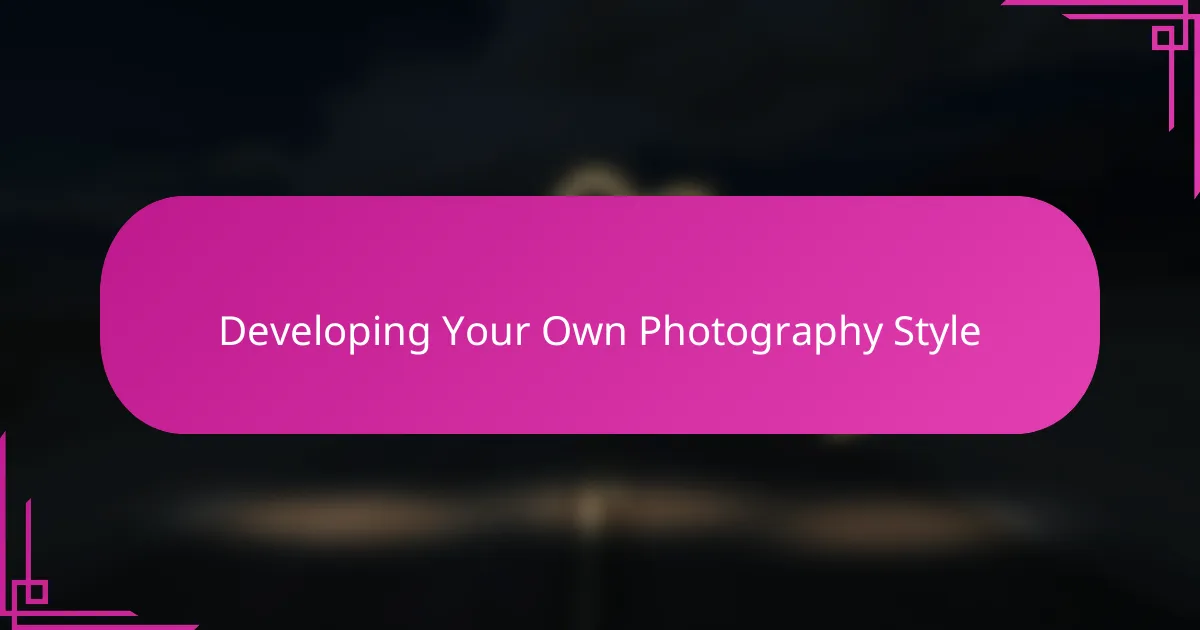
Developing Your Own Photography Style
Developing my own photography style felt like piecing together a puzzle from countless influences and personal experiences. I asked myself, what parts of a photographer’s work resonate deeply with me, and why? It’s through this reflection that I started understanding not just what I admire, but what I want to say through my images.
I found that experimentation is key—trying different techniques and subjects without fear of failure. There was a moment when I pushed beyond my comfort zone by shooting in harsh midday light, something I’d usually avoid, and it completely changed how I interpreted mood and texture. Have you ever noticed how stepping outside your usual approach reveals hidden facets of your creativity?
At the same time, I learned developing a style isn’t about copying others but embracing my unique perspective. When I stopped worrying about replicating a famous photographer’s exact look and instead focused on what felt authentic to me, my work gained a personal voice that resonated more. Isn’t that what style should be—a genuine expression that only you can create?